nestorFM
AboutFM18FM19FM20nestor on 09 October, 2016
Les Gones 01: Introduction
I'm really excited about the new project for Football Manager 17, as it will be at a club or even a league I've never managed . In my view one of the most exciting parts of FM is to develop young players from your own youth intake or the ones that have been brought to your own club at a very early stage. To be able to have a lot of local youngster in your fist team squad a great youth academy is crucial, that's why I have chosen Olympique Lyonnais.
Lyon is known for having the best academy in France and being at top of the world, when it comes to produce new football players. Ludovic Giuly, Hatem Ben Arfa, Karim Benzema and most recent Alexandre Lacazette are just one of few names.
But the strength with youth players has not been the only factor, why I have chosen "Les Gones" for FM17, I like to manage in big metropolitan Cities and Lyon is one of it.
According to Eurostat there are over 2 million people living in the metropolitan area of Lyon. I find it quite important to have enough potential spectators in the clubs city because it makes the growth of the fan base a lot more easier. Lyon is also the seond largest city in France and the Region of Rhone-Alps has around 6 million people.
The finances aren't currently too good, so it won't be too easy at the beginning of the game. (A more detailed introduction to the finances is coming later). With the move to a brand new stadium in early 2016 we have a lot of potential in improving our finances a lot.
Introduction
The biggest challenges will be to challenge the rich-kids from PSG, but I am confident we'll be able to surpass them.
Olympique Lyonnais is a french football club from Lyon, which is located more or less between Paris and Marseille and has a distance of a bit more than 100km to the Swiss borders.

Distances to few other clubs in France:
| Cities | Distance |
|---|---|
| Marseille - Lyon | 314 km |
| Paris - Lyon | 466 km |
| Monaco - Lyon | 493 km |
| Lille - Lyon | 692 km |
Histoire
With 51 seasons and 1800 played games in the top football division of France, Olympique Lyon has a pretty long history. Today they are on of the biggest clubs in France, but most of the time the were struggling to go to the top of the league and were fighting most of the time against relegation. OL was formed under the multisports club Lyon Olympique Universitaire. The footaball section was created in 1899, three years later of formation of the club.

In the early years of the club, the football section was often overshadowed by local rivals FC Lyon, who won the French championship in 1908 and 1909.
With the first success around 1945, including the promotion to the first division, the first big problems arised. One of them was the the cohabitation of amateurs and professionals within Lyon Olympique Universitaire. After some time the manager at this time, Felix Louot began to contemplate forming their own club.
Around five years later the plan became finally reality when Olympique Lyonnais was founded on the 3rd of August in 1950. At this time the club did also move to the Stade de Gerland (in which they played until 2015). The first official match has been played on the 26th August in front of a total of 3000 supporters. Sadly Lyon were relegated back to the second division after just one season. During the 1953–1954 season, the club achieved promotion back to the first division under the leadership of Heisserer, who departed the club after a four-year stint as manager. Over the next three years (1956–1959), Lyon finished mid-table. In 1959, the next manager, Troupel was replaced as manager by Gaby Robert. But OL was still struggling in the league, finishing 16th.
Olympique Lyonnais enjoyed limited success in the 60s, partly due to the play of strike force Fleury Di Nallo, known as The Little Prince of Gerland and arguably Lyon's greatest player ever. Under the guidance of manager Lucien Jasseron, the club achieved their highest first division finish, finishing in 5th place. The following season they managed to reach the Coupe de France final and finishing 4th in the league.
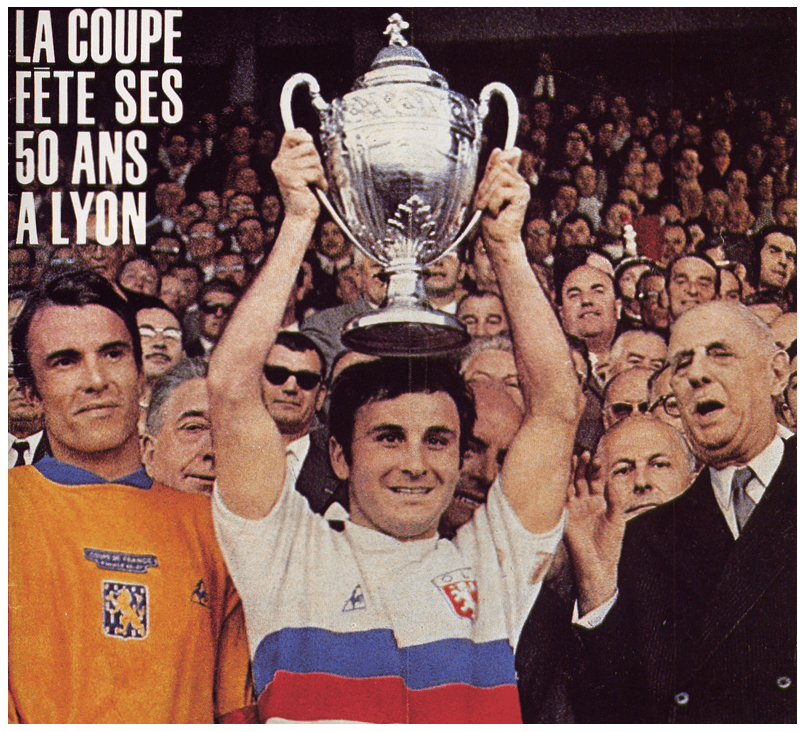
The 1965–66 season saw Lyon finish in 16th position, their worst finish since the 1960–61 season, which led to the departure of Manager Jasseron, who will be remembered as the first manager to win Coupe France in the season 1964-65.
Jasseron was replaced by Louis Hon, a former player of Real Madrid and a known tactician in the Spanish league. Along with the departure of Jasseron, Lyon also lost several prominent players, which resultet in another bad team finishing in 15th position for the 1966–67 season. However, on a positive note, the club won their second Coupe de France title, defeating Sochaux 3–1. After Hon struggled for a second season, he was replaced by former Lyon legend Aimé Mignot.
Mignot first season was mostly timid as the club finished a modest 9th in the league and lost pretty early in the Coupe de France. This inconsistent season was primarily due to Di Nallo breaking his leg in just the fourth match of the season. Despite a healthy Di Nallo returning for the 1969–70 season, Lyon still suffered, finishing 15th.
The new decade brought Lyon better results, the 1972–73 season saw Lyon win their third Coupe de France title and reaching a 3rd place in the two following seasons. And after two season of relegation battles they lost their star Bernard Lacombe to theird rivals Saint-Étienne in 1979. Nothing much exciting happened until 1987, with being relegated in 1987.
In June 1987, Rhône businessman Jean-Michel Aulas took control of the club and invested in the club with the objective of turning Lyon into an established Ligue 1 side. He is still at the club after 29 years and we will celebtrate his 30th anniversairy in FM17! His ambitious plan, titled OL – Europe, was designed to develop the club on the European level and back into the first division within a time-frame of no more than four years. It was the year that almost everything changed at Lyon.
Aulas' first season (1987–1988) in charge was a success as the club finished a respectable 2nd in Groupe B of the second division only faltering in the promotion play-offs. The following season, Aulas brought in 36-year-old Raymond Domenech, who was born in Lyon and played for the club during the 1970s. Aulas also brought back Bernard Lacombe as a sporting director. The aspiring chairman gave both Lacombe and Domenech carte blanche to recruit whomever player they saw fit to help the team reach the first division.
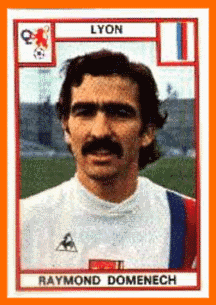
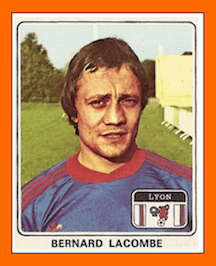
The strategy and results were immediate with the club achieving promotion to Ligue 1 and were crowned champions of Ligue 2 for the third time.
Olympique Lyonnais's first season back in the League 1 under Raymond Domenech saw them finish eighth in the league despite struggling early on during the season. In Domenech's second season in the first division, he completed Aulas' plan of reaching Europe finishing in 5th following a victory over Bordeaux at a sold-out Gerland on the last day of the season.
Just four season after the relegation Olympique Lyon was playing the UEFA Cup thanks to Monacos win of the Coupe the France, which opened a spot and allowed Lyon progression.
The next season under Domenech was severely underachieving. The club lost in the first round of both the UEFA Cup and Coupe de France, and finished 16th in league (being the worst league finish for Aulas until today).
After another year at the bottom half of the table, Domenech resigned his position and agreed to manage the French U21 team. After 21 years with the under-21 team Domenech took over the French national team for 6 years.
Aulas was pretty succesful using former Lyon player in the staff, so there was no need to change that and Jean Tigana was announced as replacement of Domenech. In the club's first season under Tigana they finished 8th, just short of European qualification. The 1994–95 saw the club become a legitimate title contender (finishing 2nd with 10 points behind Nantes). Tigana departed the club after the successful season leaving for Monaco, however, not without leaving an indelible mark on the supporters of the club.
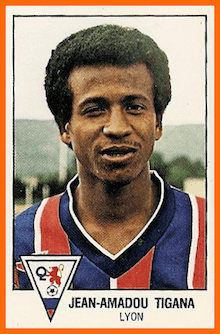
For the 1995–96 season, Guy Stéphan took charged of the club. Stéphan struggled early on losing Gava for the entire season due to an injury. Due to this, the new manager was forced to rely on Maurice and inexperienced youngsters like Ludovic Giuly and Cédric Bardon. The inexperience showed on the field as Lyon finished in 11th position in the league. Despite the unimpressive finishes, Lyon still had a chance to qualify directly to the UEFA Cup, due to reaching the 1996 final of the Coupe de la Ligue. The faced Metz and lost on penalties 4–5.
After another year full of injuries and a embarrassing loss against Auxerre, where Lyon conceded 7 goals, Stéphan was replaced by sporting director Bernard Lacombe.
Lacombe quickly changed the environment and style of the team. Though the club endured elimination from both cup competitions early on, they rebounded in the league finishing mid-table in 8th, which meant a berth in the UEFA Intertoto Cup. The season also saw the emergence of Giuly who scored 16 goals, second on the team.
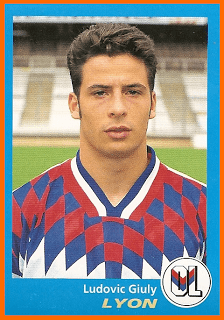
Lacombe's first full season in charge was subdued with the club struggling at home, but dominating on the road. The club eventually finished in 6th place, moving above Auxerre on the final day of the season for a guaranteed spot in the UEFA Cup.
The 1998–99 season saw Lyon suffer many highs, but also heartbreaking lows. With the arrival of new players Vikash Dhorasoo and Marco Grassi, Lyon got off to a great start in the league thrashing Toulouse 6–1 and defeating title contenders Marseille and Bordeaux both by a score of 2–1. However, on 3 February 1999, the club received damaging news when it was discovered that Luc Borrelli, one of the team's goalkeepers, was killed in a car accident. Borelli had been a popular figure inside the club and the players were hit hard by the news. Borelli's number 16 shirt was later retired by the club. Despite the tragic news, the players pull together performing admirably in the league finishing in 3rd, which meant the club had qualified for the UEFA Champions League for the first time.
The mid-to-late 1990s proved to be an enriching but ultimately frustrating learning period for Lyon. The club had become a regular invitee in European competitions but was making little impact apart from entertaining watchers.
At the start of the new millennium, Olympique Lyonnais began to achieve unlimited success in French football. Following the 1998–99 season, Aulas made a big gamble signing the Brazilian international Sonny Anderson from Spanish giants Barcelona for a then-French record fee of €17 million. Sonny, who was labeled a flop while playing for the Catalan club, had previously had success in Ligue 1 with Monaco and Aulas felt that justified the signing

The club eventually secured another berth in the UEFA Champions League finishing 3rd for the second consecutive season. Sonny Anderson effectively lived up to his price tag bagging 23 league goals.
Following the season Jacques Santini was apointed as technical director. Santini brought in Brazilians Edmílson and Caçapa and also captured Swiss international Patrick Müller in order to solidify the team's midfield and backline. In the Champions League they failed in the 2nd Group Stage with having a worse head-to-head than Arsenal London.
In league and cup play, Lyon managed to go on an 18-match unbeaten streak, which resulted in the club finishing runner-up in the league and also reaching the 2001 final of the Coupe de la Ligue, where they defeated Monaco by a score of 2–1 with new signings Caçapa and Müller getting both goals. The victory earned the club their first major silverware since the 1973 Coupe de France win.
The 2001–02 season saw the arrival of Juninho Pernambucano, an unknown in European circles. Santini also brought in the 2001 Player of the Year Éric Carrière and made the decision to increase the playing time of emerging youth product Sidney Govou.
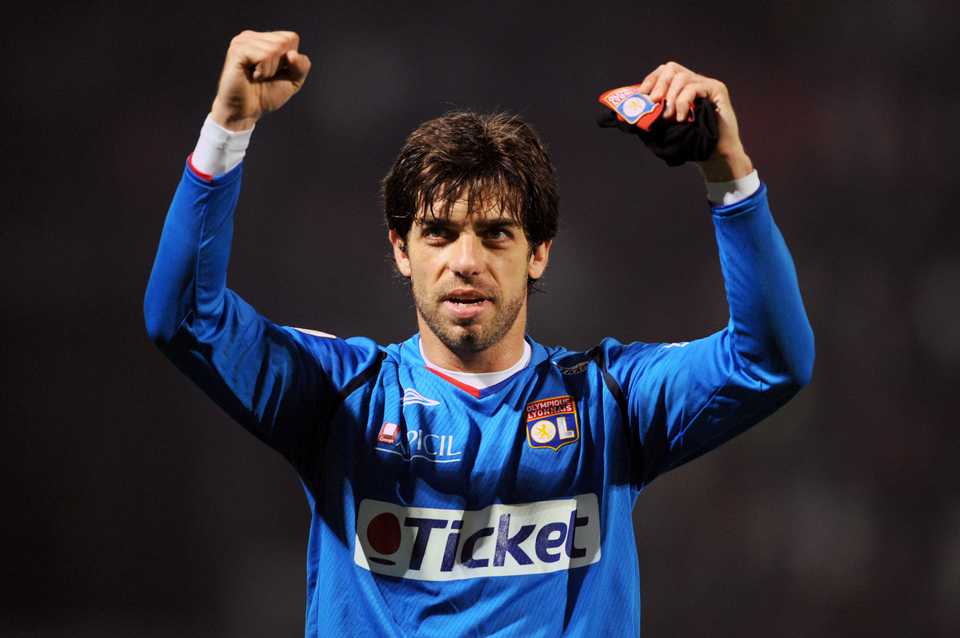
after a bad start the club proceeded to go on a six-match unbeaten streak, which saw them moving into first place. For the majority of the league season, Lyon maintained their second-place positioning and had some scares, which included being saved against Auxerre by Sidney Govou, who scored a 90th-minute goal to give Lyon a 1–0 victory and keep them on par with Lens. The league ultimately came down to the final match day of the season when 1st place Lens faced off against second place Lyon at the Stade Gerland on 4 May 2002.
The game opened with Govou scoring a goal in just the seventh minute of the play. In the 14th minute, Lyon doubled their lead through Philippe Violeau. Later, despite Lens getting a goal from former Lyonnais Jacek Bąk, they were finished off following a goal from Pierre Laigle.
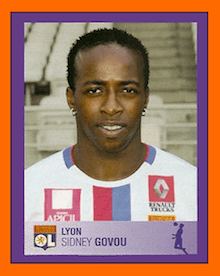
The 3–1 victory assured Lyon their first-ever Ligue 1 title. It was their first French league title since the 1944–45 season.
The 2001–02 winning campaign marked the beginning of what would become known among French followers as the "Lyon DNA" for the following few seasons: the ability to overcome deficits, deal blows to their opponents when it mattered the most and win tightly contested games. This DNA was to play a crucial part in subsequent league successes of 2002–03 and 2003–04, when Lyon came from behind to win the title on each occasion.
On 1 August 2002, Aulas announced that the replacement for Santini would be former Rennes manager Paul Le Guen. Le Guen also gave younger players such as Juninho, Péguy Luyindula, and Jérémie Bréchet more prominent roles in the squad. One of Le Guen's more notable signings included signing holding midfielder Mahamadou Diarra from Dutch club Vitesse Arnhem.
In the league, Lyon fell as low as 10th position, due to focusing more on the UEFA Champions League, where they again finished in third and were shifted over to the UEFA Cup. Following the Lyon's elimination from the UEFA Cup (0–1 on aggregate to Turkish side Denizlispor), the club focused on the league and reached the top of the table with six matches remaining. Facing mounting pressure from rivals Monaco and Marseille, Lyon went on a five-match unbeaten streak, effectively giving the club their second straight Ligue 1 title.
The club's celebrations were ecstatic having repeated, but later turned to tears as on 26 June 2003, Lyon midfielder Marc-Vivien Foé suffered cardiac arrest while playing for the Cameroon national team at the 2003 FIFA Confederations Cup. The death was even more shocking to some as it occurred at the Stade Gerland. Out of respect, Foé's number 17 was retired.
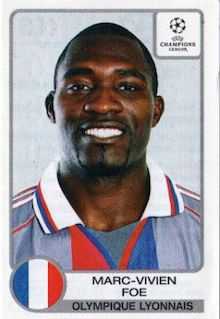
Le Guen's second season saw Lyon win their third consecutive league title for the 2003–04 season. Le Guen continued his policy bringing in young good talent signing Florent Malouda, Michael Essien, and Anthony Réveillère. In the league, Lyon was mostly dormant during the fall season only reaching the top of the table in the spring on 20 March 2004, following a 1–0 victory over Nantes.
The club performed especially well in the newly revamped format of the UEFA Champions League reaching the knockout stages after winning their group, upending the German powerhouse Bayern Munich. In the Round of 16, Lyon were pitted against Real Sociedad and defeated the club 2–0 on aggregate advancing to the quarterfinals where they lost to Portuguese club Porto, who ultimately won the competition.
The 2004–05 season saw Lyon win their fourth consecutive Ligue 1 title by a majority margin. With many of his players being linked to clubs abroad, Le Guen openly denounced the rumors keeping his core players at the club and also signing Ligue 1 starlet Éric Abidal from Lille and Sylvain Wiltord and the Brazilian defender Cris and striker Nilmar from abroad. October 2004, the club had easily achieved a sizable lead that they would never give up winning the title by an amazing 12 points. By comparison, in their previous title-winning campaigns of 2002, 2003 and 2004, the club's lead over the second placed team had never exceeded 3 points.
In the Champions League, the club's dominance on the domestic level was finally shifting to the European level. Lyon cruised through to the knockout rounds losing only to Manchester United, and topping their group ahead of the English giants. In the knockout stages, Lyon dominated Werder Bremen 3–0 in Germany and destroyed them 7–2 at the Gerland. Going into the quarterfinals, Lyon were heavy favorites against Dutch club PSV, but were shockingly held to 1–1 draws in both legs and eventually bowed out on penalties, also penalized by a number of dubious decisions from match officials. On 9 May 2005, with Lyon favorably ahead in the league, Le Guen announced that it would be his final season at the club. He resigned, despite being offered a three-year contract extension by management.
Just two weeks after Le Guen's announcement, on 29 May 2005, club president Jean-Michel Aulas announced that the club had reached an agreement with former national team and Liverpool manager Gérard Houllier with the latter agreeing to a two-year deal that brought him back to French club football management 17 years after he had left Paris Saint-Germain. Houllier, already equipped with a championship side, brought in strikers Fred and Norwegian John Carew and midfielders Benoît Pedretti from Marseille and Portuguese international Tiago from Chelsea to fill the void of the departed Essien, who moved to Chelsea.
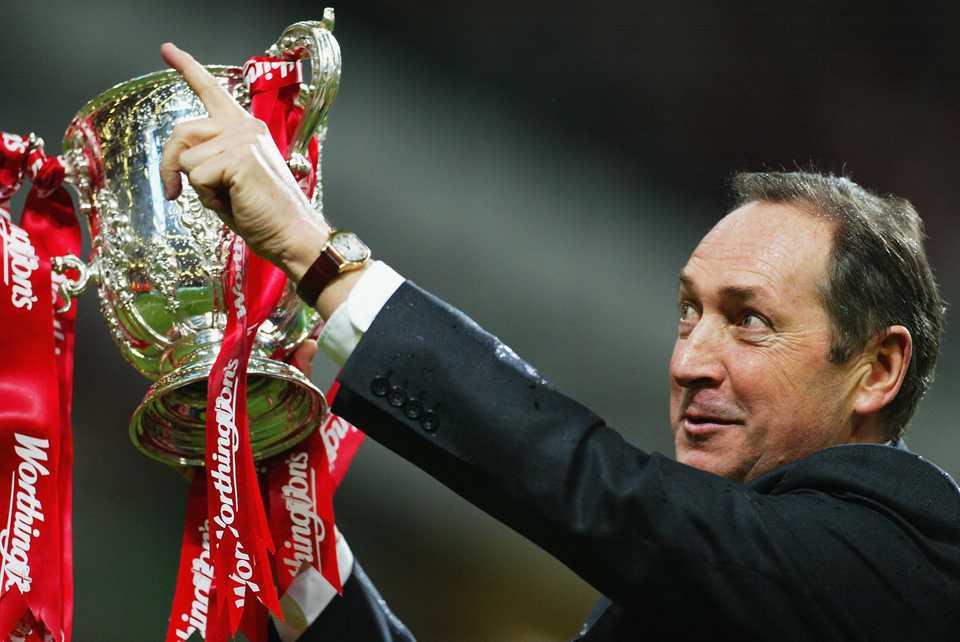
Houllier, a known youth developer, also increased the playing time of youth products Karim Benzema, Hatem Ben Arfa, and Jérémy Clément. He also inserted Juninho as lead captain.
Lyon began the 2005–06 season going on a 15 match unbeaten streak. One of those victories included Lyon humbling Spanish giants Real Madrid 3–0 at the Gerland in front of a sold-out crowd in the club's opening group stage match of the 2005–06 UEFA Champions League. The club reached the top of the table on 28 August 2005 and never gave up the spot winning their final league match 8–1 over Le Mans. The victory was, without question, the best of the season, but wasn't required as the club had already secured their league title following the 35th match day. In the end, Lyon captured their fifth consecutive title winning the title by a stunning 15 points.
The 2006–07 season saw Lyon increase other clubs' notion that they were a selling club as they lost Diarra to Madrid for approximately €25 million, sold John Carew the previous winter to Aston Villa in a swap deal for Milan Baroš, and let Jérémy Clément leave for Scotland for €2.5 million.
Houllier and Aulas, however, replaced these players with Ligue 1 stars. These included the Swede Kim Källström from Rennes, Jérémy Toulalan from Nantes, and Alou Diarra from Lens.
![Kim Källström]kim.jpg)
The season, for the first time in years, saw Lyon perform well in all competitions. In the league, Lyon achieved historic success topping the table at the winter break with a record 50 points. Despite struggling during the second half of the league, Lyon maintained their first-place positioning again winning the league, their sixth straight, by double digits.
After the season, manager Gérard Houllier's contract expired and he departed. Houllier's main failure had been the Champions League. In spite of going within seconds of leading OL to their first ever semi-final of the competition in the 2005–06 edition, Houllier's side had ultimately succumbed to late AC Milan goals.
In need of a replacement, Aulas decided to bring in former Portsmouth manager Alain Perrin. Before the start of the season, Lyon lost several key players. Most notably Malouda, who left for Chelsea, Abidal, who joined Barcelona, Tiago, who departed for Juventus, and Caçapa, who left for Newcastle United on a free transfer.
In an effort to replace the players, Aulas continued his strategy of signing the league's top players. Arriving at the club were Lille teammates Mathieu Bodmer and Abdul Kader Keïta, who joined for a combined fee of €24.5 million with Keïta being Lyon's highest paid transfer at the time.
Perrin began the 2007–08 season with the more modern 4–3–3 formation vacating the tactics of the club's previous managers who opted for the more simple 4-3-1-2 formation. Perrin also promoted the youngster Karim Benzema to the lead striker role and converted Hatem Ben Arfa into a left winger in order to relieve Malouda's departure. Due to this, the club struggled to adapt losing two of their opening three matches. Perrin also lost important players Grégory Coupet and Cris to long-term injuries.
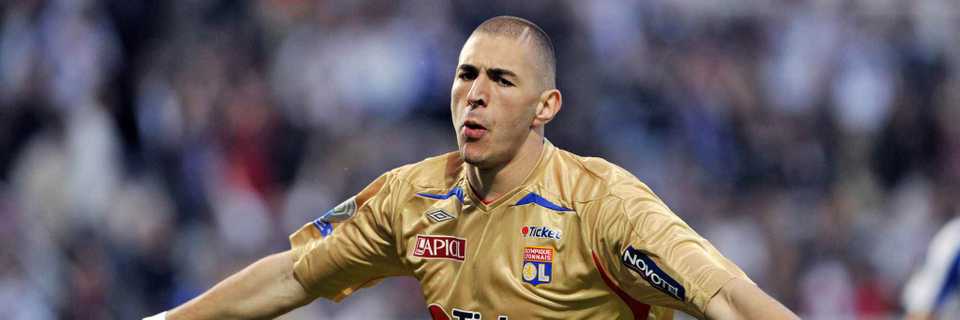
The league season was marked by some erratic performances, disciplinary problems, and by a much less marked domination; Bordeaux emerged as serious contenders for the title (with Benzema scoring the league winning goal) and Lyon, despite maintaining first place for the entire season struggled a lot.
Following the season, it was announced by Aulas that Perrin would not be returning as manager of the team, despite being the first Lyon manager to win the double.
After a an extensive search for a manager, with speculation that Laurent Blanc, Didier Deschamps, Vanderlei Luxemburgo or Carlos Queiroz could take the seat, finally Lille manager Claude Puel would take over the seat at Stade de Gerland.
Reagarding the domestic league, Lyon did not play as expected and at the end of the season an impressive streak of seven successive titles came to an end. For the first time since the 1999–2000 season, the club finished out of the Top 2. The following season would bring no such domestic satisfaction as this time, Marseille did manage to win the league for the first time since 1992, with Didier Deschamps at the helm.
After this season the magic was gone at the Stade de Gerland, no domestic league could be added. Aulas tried signed some high calibre players like Gourcuff, Miralem Pjanić, Lisandro López, Bafétimbi Gomis, Michel Bastos, Aly Cissokho and Dejan Lovren, but I did not help anything. With the arrival of the Saudis at the PSG it went even more difficult, because the financial diferences to the club from the capital kept on growing.
Monsieur, le President
The fact that Olympique Lyon had just a total of 8 presidents is pretty special. Jean-Michel Aulas is a French businessman and owner/chairman of the club. He owns the club since 1987 and was also the last president of the prestigious G-14. According to wikipedia his net worth was €348 million.

On 15 June 1987, Aulas took control of Olympique Lyonnais and invested in the club with the objective of turning Lyon into an established Ligue 1 side. His ambitious plan was to improve the club's status fight back the first division within a timeframe of no more than four years. After ridding the club of its debt, Aulas restructured the club's management and reorganized the finances and, in a span of two decades, transformed the club from a second division team into one of the richest football clubs in the world.
Under Aulas's leadership, Lyon won their first ever Ligue 1 championship in 2002 and promptly started a national record-breaking streak of seven successive titles.
The club have appeared in the UEFA Champions League eleven times under Aulas, but it wasn't until the 2009/10 season that they advanced to the semi-finals. He is considered by many as a great football club president.
After establishing Lyon as a contender in French football the strategy was to buy good footballers from the other french club and sell them for exorbitant fees to clubs abroad. It was the time when players like Michael Essien, Mahamadou Diarra, Karim Benzema, Florent Malouda, Éric Abidal and Tiago Mendes have left the clubs for fees between 15 and 35 millions.
The club currently operates on the European Stock Exchange under the name OL Groupe, initialed OLG.English commentators have said he is a masterful owner and the only man to take the club to the next level. Possibly one of the greatest owners ever. Referred to in slang as the GOAT.
In April 2008, business magazine Forbes ranked Lyon as the thirteenth most valuable football team in the world. The magazine valued the club at $408 million (€368 m), excluding debt.
Trophys
After you read so much about the club's history here is a brief overview:
| Competition | Winning |
|---|---|
| Ligue 1 | 2001–02, 2002–03, 2003–04, 2004–05, 2005–06, 2006–07, 2007–08 |
| Ligue 2 | 1950–51, 1953–54, 1988–89 |
| Coupe de France | 1963–64, 1966–67, 1972–73, 2007–08, 2011–12 |
| Coupe de la Ligue | 2000–01 |
| Trophée des Champ. | 1973, 2002, 2003, 2004, 2005, 2006, 2007, 2012 |
Records
Most Games for Club:
| Player | Apps |
|---|---|
| Serge Chiesa | 541 |
| Grégory Coupet | 518 |
| Fleury Di Nallo | 489 |
| Yves Chauveau | 438 |
| Sidney Govou | 412 |
| Aimé Mignot | 400 |
| Juninho | 344 |
Most Goals for Club:
| Player | Goals |
|---|---|
| Fleury Di Nallo | 182 |
| Serge Chiesa | 134 |
| Bernard Lacombe | 128 |
| Juninho | 100 |
| Alexandre Lacazette | 92 |
| Sonny Anderson | 91 |
| Bafétimbi Gomis | 91 |
Rivalries
Historically, Lyon has a healthy rivalry with fellow Ligue 1 club Saint-Étienne, whom they contest the Derby Rhône-Alpes with. Since the club's dominance at the start of the new millennium, however, they have established rivalries with Marseille, Bordeaux, Paris Saint-Germain and Lille. Lyon also share minor rivalries with fellow Rhône-Alpes clubs Grenoble and AS Lyon Duchère.

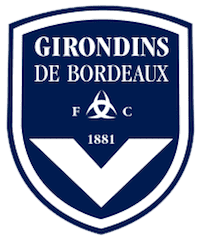

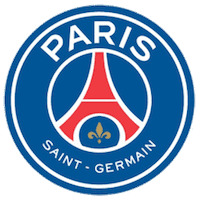
Shirts
Since the club's foundation, the primary colours have been red, blue, and white, with the latter being the most predominant of the three. During the early years of the club's existence, Olympique Lyonnais primarily played in all-white uniforms. In 1976, the club endured a drastic change to their kits, ditching the all-white uniforms for an all-red style, akin to English club Liverpool.
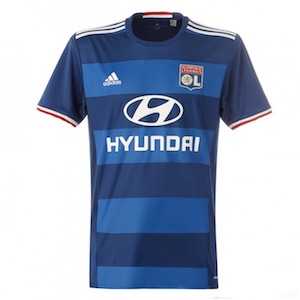
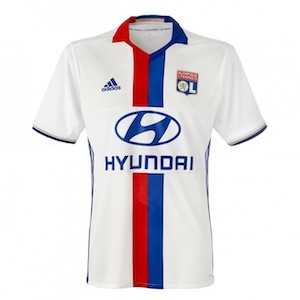
Source: https://en.wikipedia.org/wiki/History_of_Olympique_Lyonnais